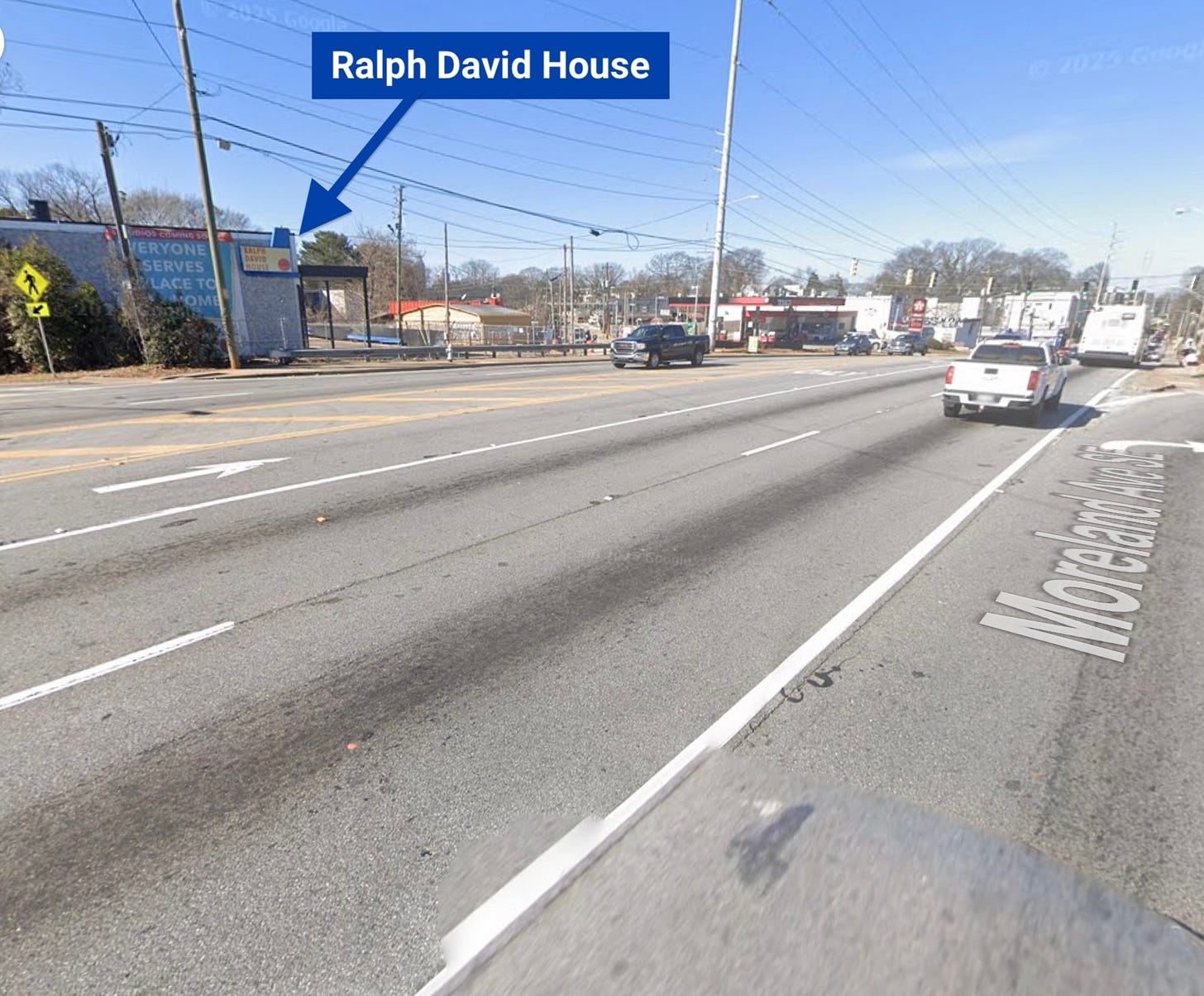Our affordable housing should be more walkable than our self-storage facilities
When storage is located on the Beltline and near parks while deeply-affordable homes are on dangerous car-sewer roads, we've got a problem.
Urbanize Atlanta reports on the progress of the new self-storage facility on the Eastside Beltline near Piedmont Park, which sits next to an existing storage facility.
Pedestrian-oriented dead space.
[Silver lining: City Council passed legislation in the wake of this that prohibits further storage facilities on the Beltline.]
Public Storage facility near Piedmont Park claims properties next to enhanced Beltline trails
The second and third images are of Ralph David House on Moreland Avenue, a wonderful project that supplies apartments for people who’ve been unhoused and are making less than 30 percent of the area median income.
And yet it’s on a car sewer.
Photos: Shabby 1960s Atlanta motel reborn as affordable housing
This is the road people will walk on to get to and from the north/south bus lines. It’s next to a freeway access point.
My question:
What else can the city do to make sure Atlanta doesn't become known as a place where storage gets put in walkable places while affordable housing is on dangerous roads? Where pedestrian-friendly locations aren't just for the wealthy and their excess stuff?
CAVEATS:
I’m not saying the location of Ralph David House is 100 percent awful. There’s bus access nearby, even if getting to and from it is an unpleasant walk. And I’m not saying that there’s a direct relationship between the storage facilities and this. And I recognize that there are market forces that make it very difficult to put deeply affordable housing in walkable places.
All I want is for people to think about how we can improve this situation. Too often, pedestrian-friendly places are restricted for the wealthy and their storage facilities.
There are exceptions to this, but to my eyes it seems like a definite trend. Just think about it. Recognize the trend. Question it.
Walkable urbanism should be accessible for everyone, but especially for people who tend to not be able to afford cars.






